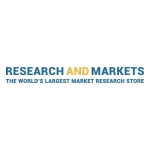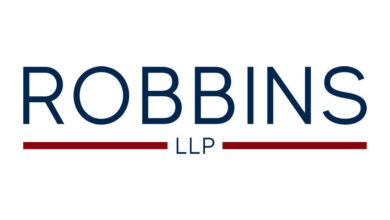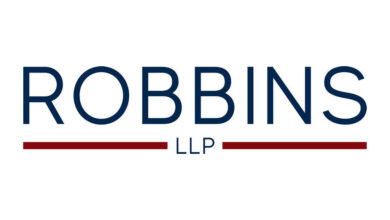Worldwide Polyphenylene Sulfide Resin Industry to 2026 – Increasing Electric Vehicle Production is Driving Growth – ResearchAndMarkets.com

DUBLIN–(BUSINESS WIRE)–The “Polyphenylene Sulfide (PPS) Resin Market – Growth, Trends, COVID-19 Impact, and Forecasts (2021 – 2026)” report has been added to ResearchAndMarkets.com’s offering.
The polyphenylene sulfide (PPS) resin market is expected to register a CAGR of around 5% during the forecast period.
Companies Mentioned
- Celanese Corporation
- DIC Corporation
- Kolon Plastics Inc.
- KUREHA CORPORATION
- NHU Materials Co.
- Polyplastics Co. Ltd
- SABIC
- SK Innovation
- Solvay
- TORAY INDUSTRIES, INC.
Key Market Trends
Liner PPS to Dominate the Market
- Adding sulfur in plastic molecule not only increases heat resistance but also facilitates molding and processing, which makes PPS a good material for replacing metal and thermosetting plastics.
- Linear PPS is a second-generation polymer compound known for its commercial ease of processing.
- The Molecular Weight of Linear PPS polymer is approximately double when compared to regular PPS. With increase in molecular chain length, the compound exhibits higher tenacity, better impact strength, and greater elongation, making it tougher, which allows it to be applied in a variety of processes from thin section injection molding to blow molding.
- Linear PPS also has low ionic impurities, which makes it useful to be applied to fuel cell parts as well as in fields, where heavy and durable electrical properties are required.
- Based on the aforementioned properties, Linear PPS polymer can be extruded, blow molded or compression molded into blocks, rods, and other shapes that are generally used for prototyping.
- Unfilled linear polymer is also used in melt spun and melt blown to produce fabrics and fibers that can be used for filtration media, flame-resistant clothes or conveyor belts.
- Linear PPS has no found solvent and in combination to high degree of whiteness, which enables coloring, the compound is facing growing interest from food and chemical industries.
- Linear polyphenylene sulfide (PPS) is used in production for a variety of automotive and industrial applications and for other application, such as drying belts in the papermaking, food and chemical industries and in environmental engineering, higher wield strength and performance allows it to be used as screws and press fitting.
Asia-Pacific Region is Projected to Dominate the Market
- Asia-Pacific region accounted for the largest market share, globally. The demand for PPS is mainly driven by the increasing demand from industries, such as automotive, electrical and electronics, industrial, and aerospace.
- Asia, which is the largest automotive manufacturing hub, witnessed a decline of 6.4% in 2019. The major countries, like China, Japan, India, South Korea, Thailand, and Indonesia, registered negative growth in the production. This is majorly due to factors, like decline in domestic demand, increasing labor costs, and implementation of new vehicle norms (BS Stage 6 vehicles in India).
- However, the development of electric vehicles is expected to continue to gain momentum in the future, especially in China, where many government programs are promoting the move away from fossil fuels, owing to the various environmental concerns.
- The Asia-Pacific region is witnessing numerous investments, primarily from the global automakers, like BMW, Hyundai Motors, and Honda. These companies are planning to venture into the Asia-Pacific automotive industry, primarily to increase production, while catering to the increasing demand for advanced automotive.
- Furthermore, China has the world’s largest production base for electronics. Electronic products, such as smartphones, OLED TVs, tablets, wires, cables, and earphones, are recording the highest growth in the electronics sector. With an increase in the disposable income of the Chinese middle-class population, along with the increasing demand for electronic products, mainly from countries importing electronic products from China, the production of electronics has been increasing significantly, since the past few years.
- The Indian government is mainly focusing on the electronic sector’s growth. Thus, it formulated various initiatives, such as a Phased Manufacturing Program (PMP), in order to add more smartphone components under the “Make in India” initiative. This is expected to drive domestic manufacturing of mobile handsets.
- Polyphenylene sulfide (PPS) is replacing metals, alloys, thermosets, and some other thermoplastics in the engineering applications. Due to its thermal stability and chemical resistance, it is well-suited for applications in very hostile chemical environments.
Key Topics Covered:
1 INTRODUCTION
2 RESEARCH METHODOLOGY
3 EXECUTIVE SUMMARY
4 MARKET DYNAMICS
4.1 Drivers
4.1.1 Technical Advancements in Electrical and Electronics Industry
4.1.2 Increasing Electric Vehicle Production
4.2 Restraints
4.2.1 Declining Automotive Production
4.2.2 Impact of COVID-19 Pandemic
4.3 Industry Value Chain Analysis
4.4 Porter’s Five Forces Analysis
4.5 Production Capacity Analysis
4.6 Price Analysis
5 MARKET SEGMENTATION
5.1 Type
5.2 End-user Industry
5.3 Geography
6 COMPETITIVE LANDSCAPE
6.1 Mergers and Acquisitions, Joint Ventures, Collaborations, and Agreements
6.2 Market Share Analysis
6.3 Strategies Adopted by Leading Players
6.4 Company Profiles
7 MARKET OPPORTUNITIES AND FUTURE TRENDS
For more information about this report visit https://www.researchandmarkets.com/r/ljtebu
Contacts
ResearchAndMarkets.com
Laura Wood, Senior Press Manager
[email protected]
For E.S.T Office Hours Call 1-917-300-0470
For U.S./CAN Toll Free Call 1-800-526-8630
For GMT Office Hours Call +353-1-416-8900



